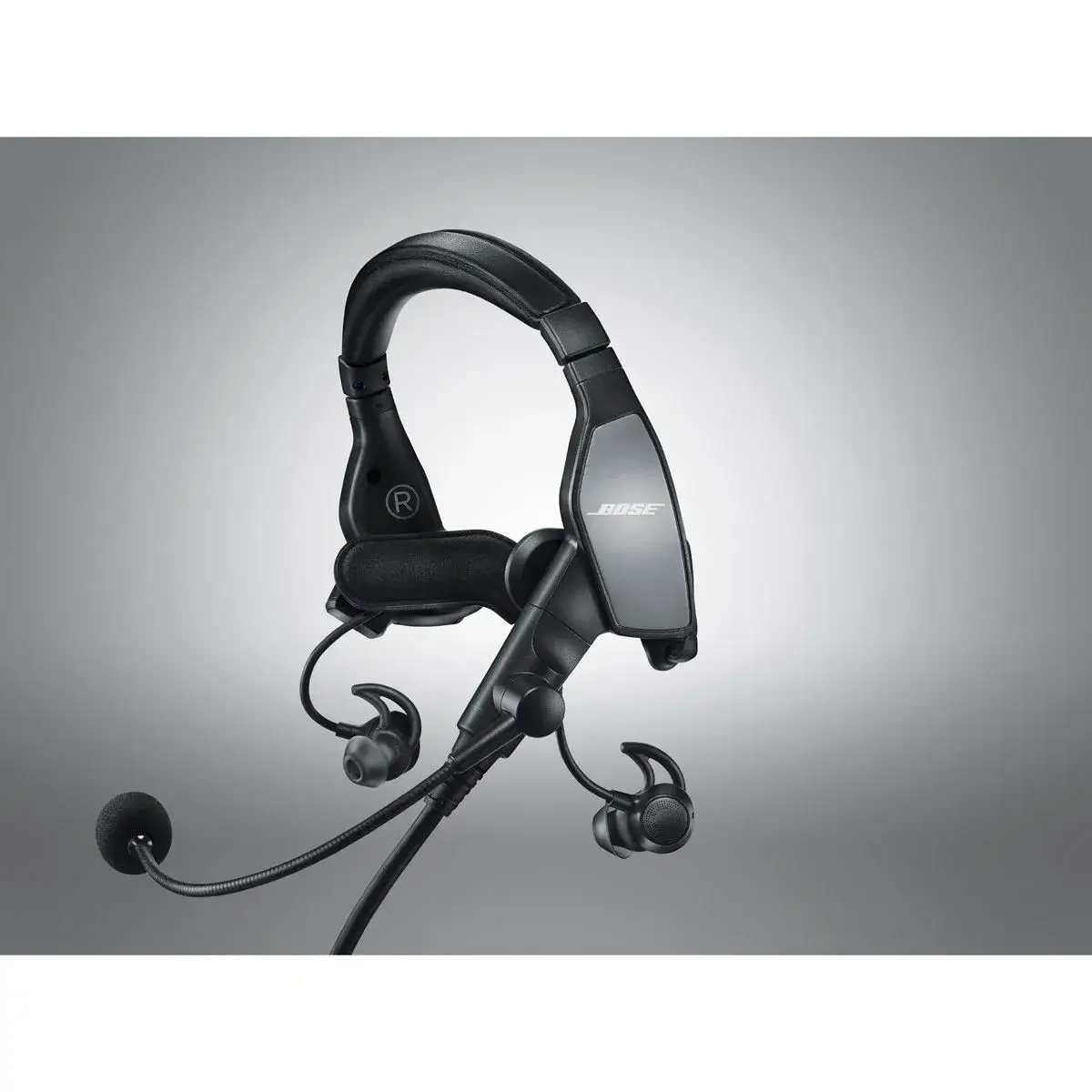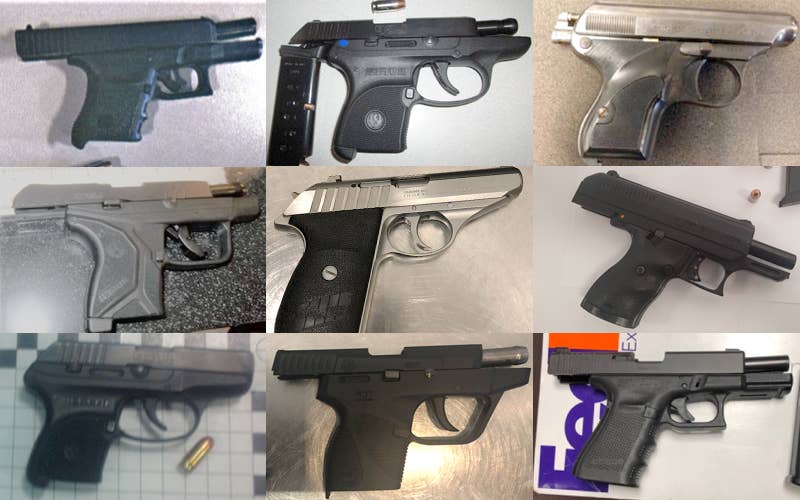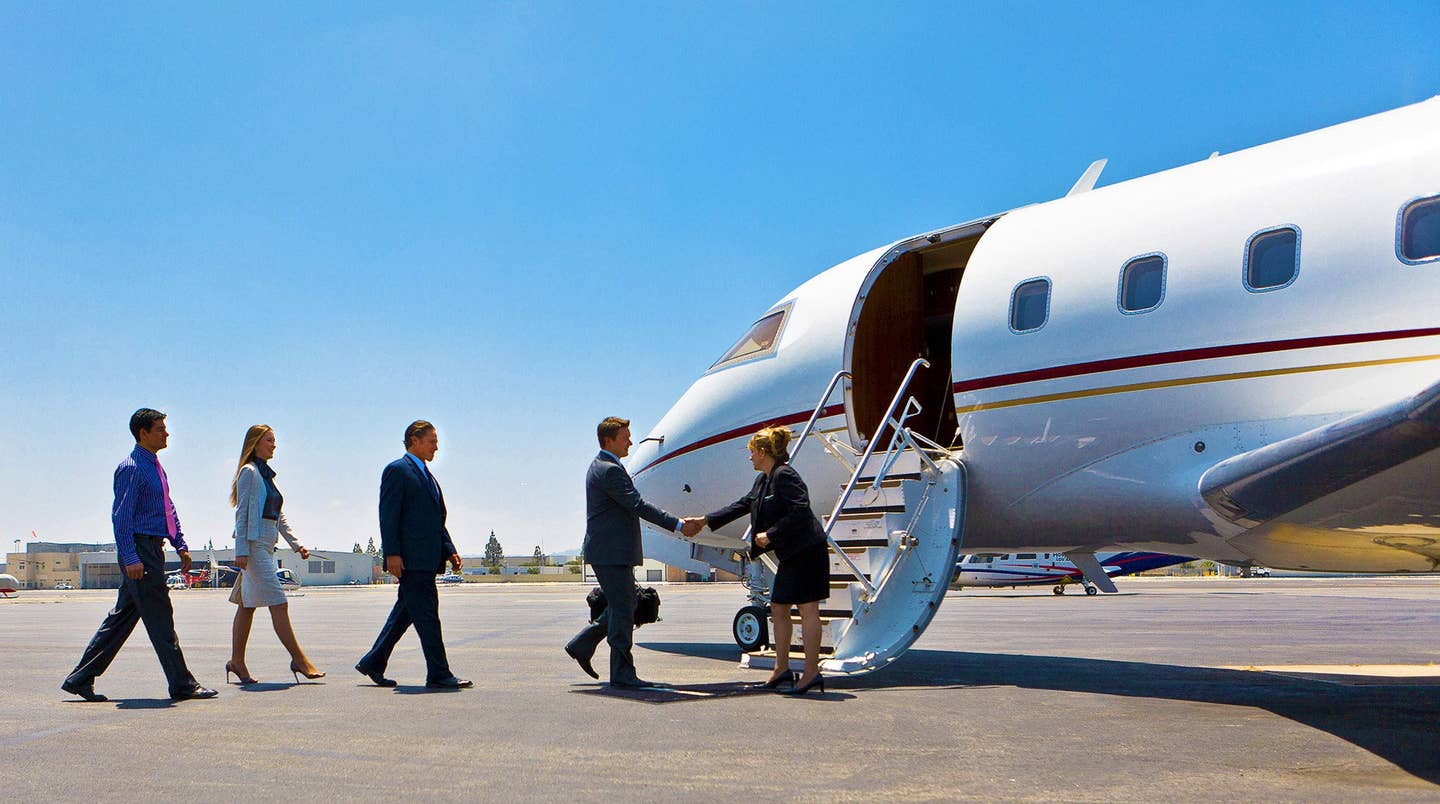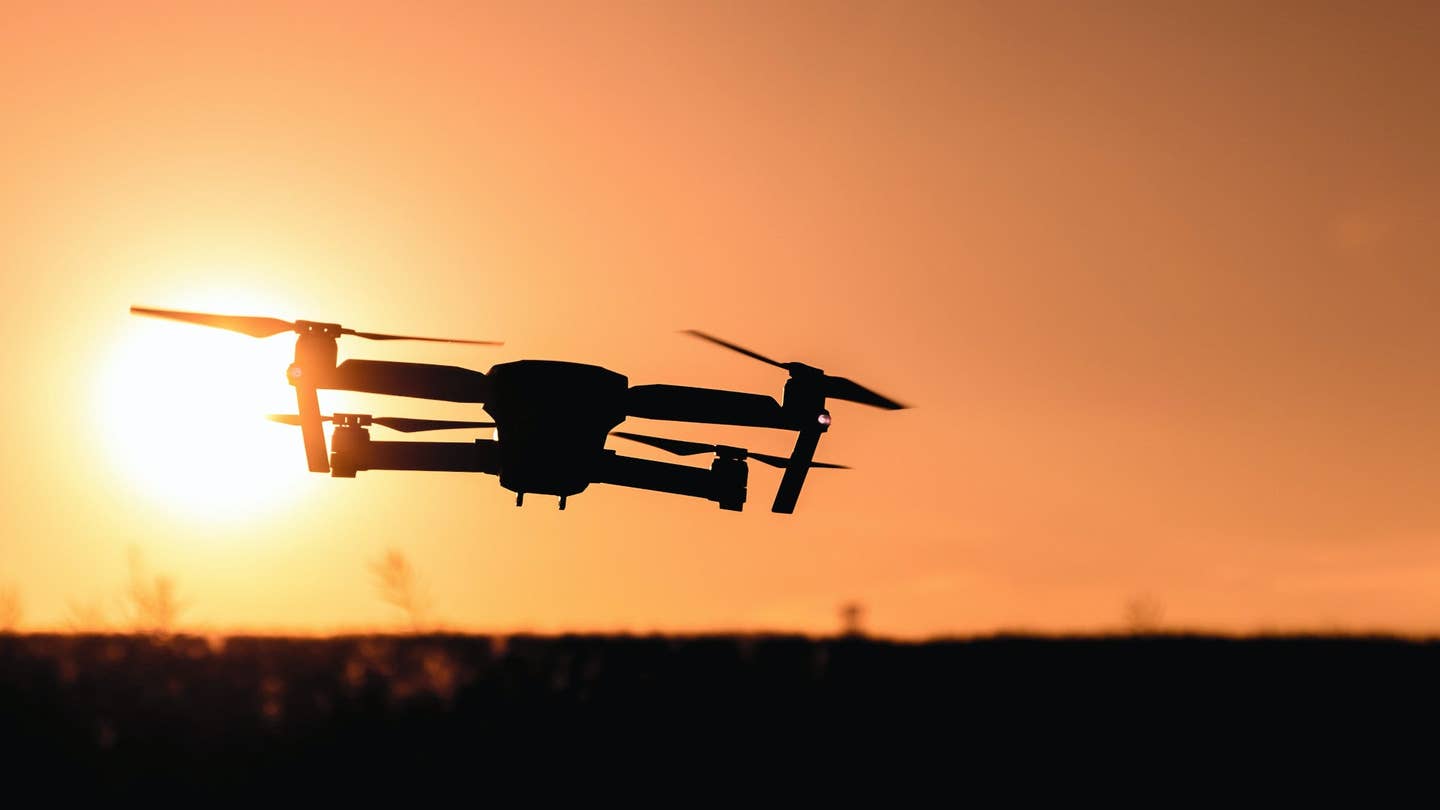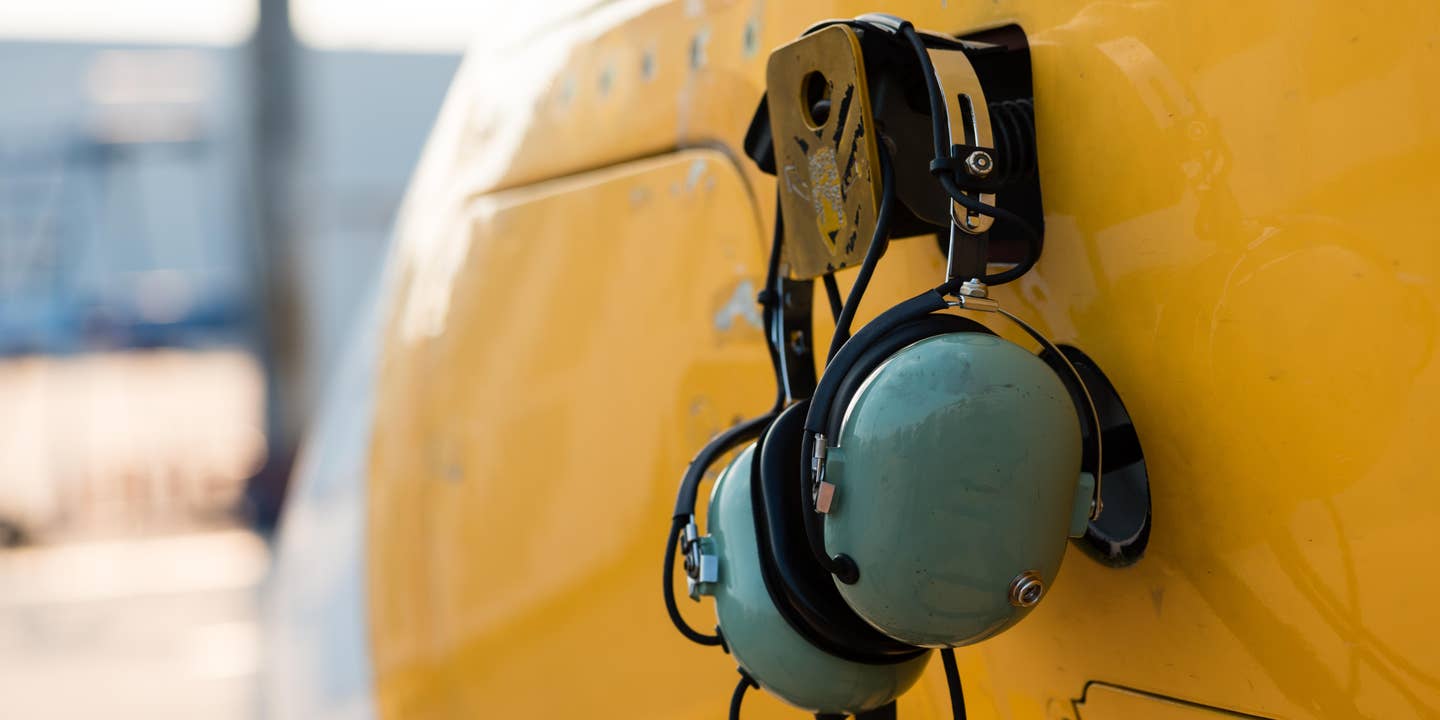
Find the best in ear aviation headset here. [Credit: CanvaPro]
Editor’s note: The following article is not intended to be a ranking, but is only to serve as a list of possible options. As the saying goes, your mileage may vary.
A quintessential part of any pilot's flight bag is their aviation headset. In-ear and over the ear options are available for pilots to choose from. For pilots in pressurized cabins with low ambient noise, in-ear aviation headsets may be the best choice for comfortability, functionality, and style. To help you decide which in-ear aviation headset would work best for you, check out the options below.
Quicklook: In Ear Aviation Headsets
- Bose Proflight Series 2 Aviation Headset: Best for jet pilots
- Faro Air In-Ear Pilot Headset: Best for pilots looking for high noise cancellation
- Clarity Aloft Pro Plus: Best for airline pilots
- Quiet Technologies Halo Tubephones: Best for budget pilots
- Axis in-Ear Aviation Headset: Best for sport pilots
- CQ Headset: Best for any pilot
6 Best In Ear Aviation Headsets
To help you choose which in-ear aviation headset is best for you, Flying has compiled a list of 6 in-ear aviation headset options.
Bose Proflight Series 2 Aviation Headset
Designed specifically for airline and corporate flight decks, including all the noise reduction, comfort, and advanced audio features that have made Bose the top-selling headset brand in aviation.
Shop NowThe Bose Proflight Series 2 aviation headset is perfect for professional pilots looking for a reliable headset and are not wary of price. The Bose Proflight Series is designed with comfortability, functionality, and professionalism in mind with soft silicone tips, three levels of noise cancellation and a sleek design.
Best for: Jet pilots
Power: 2 AA batteries
TSO Certified: Yes
NRR in dB: 3 levels
Earplug Type: Silicone- replaceable
Connection: Wired and bluetooth
Special Features:
- 3 levels of active noise canceling
- 3 sizes of StayHear+ tips (S, M, L)
- Automatic shutoff feature
Benefits:
- Very lightweight at 4.5 ounces
- Carrying case included
Disadvantages:
- High price tag
Faro Air In Ear Pilot Headset
The Faro in ear pilot headset is known for having comfortable foam earplug inserts with a high level of noise cancellation. The simplicity of the design does not rely on bluetooth to connect to the aircraft, no batteries, and offers an aux cord input for music. The headset comes in two sizes, medium and large, both with longer than average earplug inserts.
Best for: Pilots looking for high noise cancellation
Power: No batteries
TSO Certified: Unknown
NRR in dB: 50 dB
Earplug Type: Foam- replaceable
Connection: Wired
Special Features:
- Provides up to 50db of Noise Reduction
- Music Input
- Replaceable foam ear plugs
Benefits:
- Lightweight, only 1 oz.
- Dual Volume Control
- Three-year warranty
Disadvantages:
- No carrying case
- No slide adjustments on the metal headband and ear loop frames
Price: $350 on Pilotshop.com
Clarity Aloft PRO PLUS
A slightly heavier option, the Clarity Aloft Pro Plus headset, comes with a carrying case and extra foam canal tips. Boasting a FAA TSO certification, airline pilots may find this as the best in-ear aviation headset. A flexible band makes finding the perfect fit easy but the price tag may come as a surprise.
Best for: Airline pilots
Power: 2 AA batteries
TSO Certified: Yes
NRR in dB: 29-47 dB
Earplug Type: Foam- replaceable
Connection: Wired and Bluetooth
Special Features:
- Includes carrying case, 6 pair of medium comply canal tips, and lapel clip
- Fits well over glasses and under hats
Benefits:
- Replaceable foam ear plugs
- Provides over 29.5 dB of noise attenuation
- Three-year warranty
Disadvantages:
- May feel heavier than others after long wear
Price: $725 on Sportys
Quiet Technologies Halo Tubephones
The first company to develop a lightweight insert-style noise isolating foam tip headset for aviation, Quiet Technologies, is next on the list. Quiet Technologies Halo Tubephones may be the perfect in-ear aviation headset for those looking to cave on cost but not function. The Halo Tubephones are a simple version of in-ear headsets with little technology and lightweight design.
Best for: Budget pilots
Power: No batteries
TSO Certified: No
NRR in dB: None
Earplug Type: Foam- replaceable
Connection: Wired
Special Features:
- Open-cell foam allows pressure equalization between the eardrum and the cockpit
- Aerobatics approved
Benefits:
- Priced near 1/3rd the cost of the "big name" headset manufacturers
- Headset can be configured to be worn over the head, behind the head or on the shoulders
Disadvantages:
- No noise canceling
- No music auxiliary
Price: $349
Axis in-Ear Aviation Headset
The extremely lightweight design of Axis in-ear headsets makes them arguably the most comfortable on the list. The lack of batteries and the easy to use design make this headset perfect for a flight student looking for an in-ear headset option. The price is a little steep considering there is no active noise cancellation in the headset, but users claim the passive noise cancellation blocks out all unnecessary noise.
Best for: Sport pilots
Power: No batteries
TSO Certified: No
NRR in dB: No active noise cancellation, only passive
Earplug Type: Foam- replaceable
Connection: Wired
Special Features:
- Noise canceling microphone
- FlexiFrame design adapts to all head sizes
Benefits:
- Head weight of 1 oz
- Three-year warranty
- No batteries
Disadvantages:
- No active noise cancellation
- Long mic version costs extra
Price: $475
CQ Headset
The CQ headset offers a great choice for pilots looking for an in-ear headset option with no external batteries. The lightweight and simplistic design make this in-ear headset perfect for all pilots. No active noise cancellation is available on any models.
Best for: Any pilot
Power: Rechargeable battery
TSO Certified: No
NRR in dB: No active noise cancellation
Earplug Type: Foam- replaceable
Connection: Wired and Bluetooth
Special Features:
- Wear the headset over the ears or around the crown of the head or a hatband
- Internal rechargeable battery via USB-Type C cable
Benefits:
- Head weight under 3oz
- Make phone calls and listen to audiobooks or music
Disadvantages:
- No active noise cancellation
Price: $675
In Ear vs Classic Headset
When choosing the right headset for you as a pilot make sure you are choosing based on comfort and capability. For those who wear hats and glasses, an in-ear option may be the best fit, while pilots looking for high noise cancellation capabilities may want to opt for an over the ear, classic, option.
In-Ear Pros and Cons
Pros
- Can be worn comfortably with glasses and hats
- Sleek design
Cons
- Low noise cancellation or none at all
- Not recommended in small, non-pressurized cockpits
Classic Headset Pros and Cons
Pros
- High noise cancellation
- Comfortable gel or foam ear muffs-
Cons
- Uncomfortable to some
- Bulky and hard to store
What To Consider With In Ear Headsets
In-ear headsets come in many different styles and host a variety of features. When choosing the right in-ear headset consider comfortability, battery life, noise reduction, and price.
Comfort
Headsets are worn for the entirety of the flight. Choosing the right type of in-ear insert will ensure you are comfortable for the whole flight. The most common type of earplug is foam but earplugs also come in silicone and molded plastic. Determine which is the most comfortable for your ear type before buying.
Battery Life
The majority of the Bluetooth-enabled in-ear headsets require batteries, some rechargeable. On average the battery life on in-ear aviation headsets run about 30 hours with Bluetooth enabled and 45 hours when it is turned off.
Noise Reduction Rating (NRR)
Noise reduction ratings are important in high decibel cockpits. To ensure the pilot can hear the communications and respond without interruptions, noise cancellation is needed. In-ear headsets can be equipped with passive or active noise cancellation. For the highest noise cancellation capabilities, opt for an active noise cancellation headset.
Options
Some features you may want to consider when choosing an in-ear aviation headset is ear plug size, replaceable ear plug capability, and adjustable size headset. Soem in-ear aviation headsets are equipped with an auxiliary cord input to listen to music while flying.
Price
The price of in-ear aviation headsets vary depending on the features. Try to choose the headset based on comfort and functionality over price. Aviation in-ear headsets can run between $250-$1,100.
Finding the In Ear Aviation Headset for You
In-ear aviation headsets are perfect for pressurized cabins with low ambient noise. Choose an in-ear headset based on comfortability and functionality over all else. To stay up to date on all things aviation, including gear like headsets, subscribe to Flying Magazine.
FAQ
Why do helicopter passengers wear a headset?
Helicopter passengers wear headsets due to the cockpit not being pressurized. Non-pressurized cockpits are very loud and to communicate with passengers or pilots, persons will need to wear a headset.
What headset do commercial pilots use?
Aviation headsets are worn by pilots to communicate with passengers and air traffic controllers. These headsets are manufactured by many different companies such as David Clark and Bose.
Why are aviation headphones so expensive?
Most aviation headsets are approved by the FAA based on Technical Standard Orders (TSOs). This requires time and money to receive the certification and is a factor in the price of aviation headsets.

Subscribe to Our Newsletter
Get the latest FLYING stories delivered directly to your inbox

